 Remember that little bundle of ears and paws we ‘rescued’ from the RSPCA shelter? That poor, shy, defenceless little creature with the blackest eyes? Yes, well – he – Angus – the ‘chosen one’ has taken over my house, my life and my sanity (but only for a little while). Turns out his human required a crash course in puppy fundamentals. Just in case you are considering a pup – and a working pup at that, I thought I’d share my crash course learnings to save you a world of pain.
Remember that little bundle of ears and paws we ‘rescued’ from the RSPCA shelter? That poor, shy, defenceless little creature with the blackest eyes? Yes, well – he – Angus – the ‘chosen one’ has taken over my house, my life and my sanity (but only for a little while). Turns out his human required a crash course in puppy fundamentals. Just in case you are considering a pup – and a working pup at that, I thought I’d share my crash course learnings to save you a world of pain.
I naively thought ‘dogs, pups – been there, done that many times – how hard can it be?’ And maybe you’re reading this and thinking the same thing. Ha – well let me introduce the Kelpie X pup … a high impact pupster with attitude – a pupster with brains – and he’s not afraid to use them!
Here are a few of my learnings in the first weeks of Kelpie puppyhood.
- One of the first lessons learned was, ‘life will never be the same again.’
- Oh and forget the idea of trying to work – maybe for the first six months. Say goodbye to your friends, your loved ones, your nice clothes and shoes… I mean just forget it.
- Do not let pupster run amuck through your whole house. No matter how cute they are, they will poo and wee everywhere. Once they do it once, they think they can do it again and again. This is not unique to Kelpies of course. I felt permanently attached to rubber gloves, mops and an assortment of sprays for the first 2 weeks.
- Urine Off and No Marking products have limited success rate in the early weeks because like babies – they just don’t get it.
- Pupsters can only hold their wee for an hour or so at a time so you have to be prepared to take them out throughout the night too. Yup! Peter was a Godsend with that one.
- Pupsters love early mornings – try 5.00am – In the name of the wee man!
- I learned to love the sun rising over the property at 6.15am (that was my limit).
- Chew Off spray – yeah pupster likes to chew that bottle.
- By the end of week two, sleep deprivation and the sheer shock of it all will leave you and your significant other looking like a husk of the vibrant soul you once were.
- Young as he is – the Kelpie pupster is super intelligent. Mental note – make the most of it! He learned ‘sit’ in one day, ‘lie down’ the next … oh-oh competitive, proud, smug human of said pupster emerging …
- Crates are not cruel. It took a LOT of watching Victoria Stillwell (UK dog trainer) to cure myself of that one. Do yourself a favour – get a crate and sit in it for your own safety.
- Playpens/exercise zone / safe zone (whatever it means to you) clipped to crate is also not cruel – in fact, it will restore sanity and free up moments of your life again – and guess what – help in the challenging phase of toilet training.
- Kelpie’s are nutters! This statement needs no further explanation.
- Kelpies love a job to do. They are working dogs with a herding instinct. As the principal human, you have just become pupster’s very own sheep or cattle to herd. And, because you are so thick in complying – you deserve to have to have your ankles nipped!
- If you still don’t comply things can escalate – they take their job seriously. So learn to fearlessly turn your back on nipping pupster or take yourself out of his company (yep try walking calmly away with jaws snapping behind you).
- Sometimes Kelpies run along the backs of stubborn cattle. This potentially means you can say goodbye to your lovely day bed, or beautiful lounges. Alternatively, be prepared to replace their herding instinct with other forms of play and training.
- Pupster loves wallaby poo. I mean why?
- Some things take time – like ‘recall’ – ie coming to you when you call their name in various degrees of hysterical (fake) excitement or desperation. If they are on the scent of something big you better be offering wallaby poo to even have a hope in hell of him coming back to you.
- Pupsters are super intelligent. A Canine Enrichment site on Facebook could quite possibly become your very best friend. Mental stimulation is key – if you crack this – you’ve made it! (Thank you Abi from Meadow Pets xxx) And thank you Australia Animal Enrichment – there’s a not lot in Australia yet but this is a great start.There are other forms of enrichment too – such as music. Yep turn out pupster has an ear for music – so we tune him in to ‘Relax my dog’ on Spotify – by the third track he has mended his hyper ways.
- But boy oh boy, when they look at you with those big black eyes, or nuzzle and throw themselves on you for a cuddle, or they allow you to sniff those pancake pads on their paws … you know they love you – and you know your heart will forever contain a paw shaped space just for him.
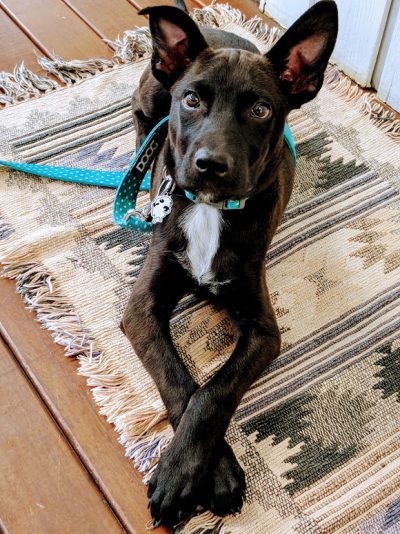
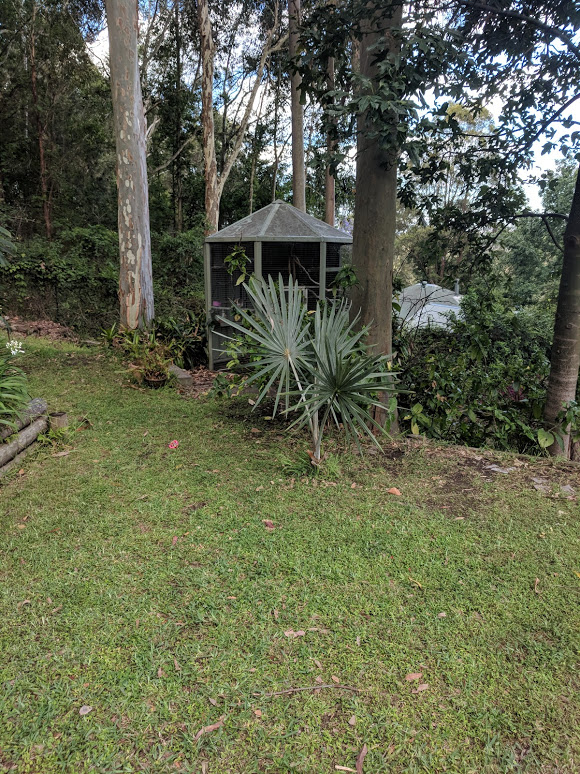
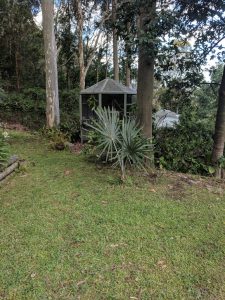


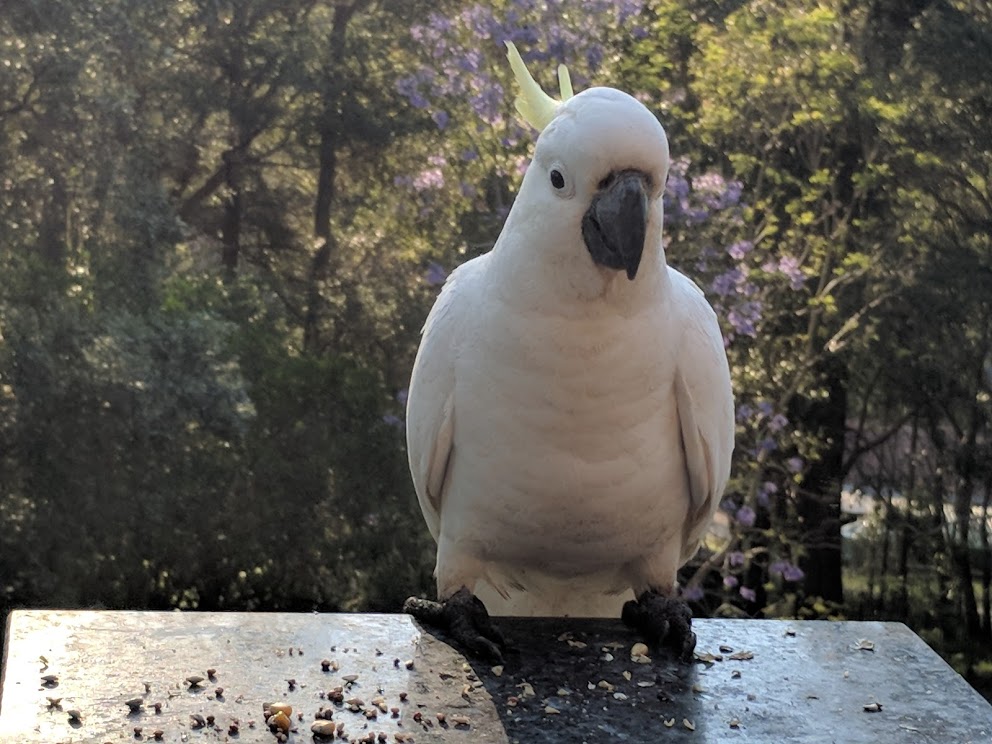
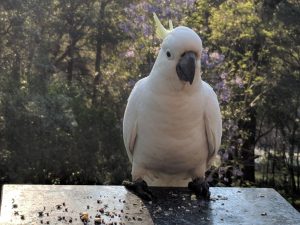
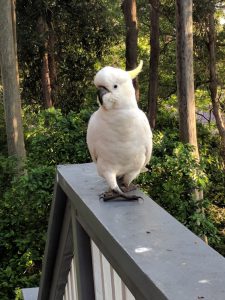



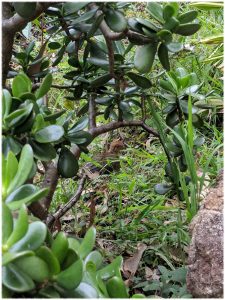 It’s probably hard to see in this picture but if you zoom to the centre you’ll see a wide-eyed little chick with brown fluffy tufts on her head and a useful looking beak. I say ‘little chick’, she’s fairly large by ‘chick’ standards. I discovered her yesterday foraging for food amongst the leaves in our backyard. After some research, I discovered she was an Australian brush turkey hatchling. We’ve been away for 2 weeks so she may have hatched while we were away. We had heard something rustling around in the leaves before and wondered if it was our resident Blue Tongue Lizard (we’ve since named him Russel as the rustling of leaves always signals his appearance) but perhaps it was this little cutie, or it’s mother looking for a suitable mound for her eggs.
It’s probably hard to see in this picture but if you zoom to the centre you’ll see a wide-eyed little chick with brown fluffy tufts on her head and a useful looking beak. I say ‘little chick’, she’s fairly large by ‘chick’ standards. I discovered her yesterday foraging for food amongst the leaves in our backyard. After some research, I discovered she was an Australian brush turkey hatchling. We’ve been away for 2 weeks so she may have hatched while we were away. We had heard something rustling around in the leaves before and wondered if it was our resident Blue Tongue Lizard (we’ve since named him Russel as the rustling of leaves always signals his appearance) but perhaps it was this little cutie, or it’s mother looking for a suitable mound for her eggs.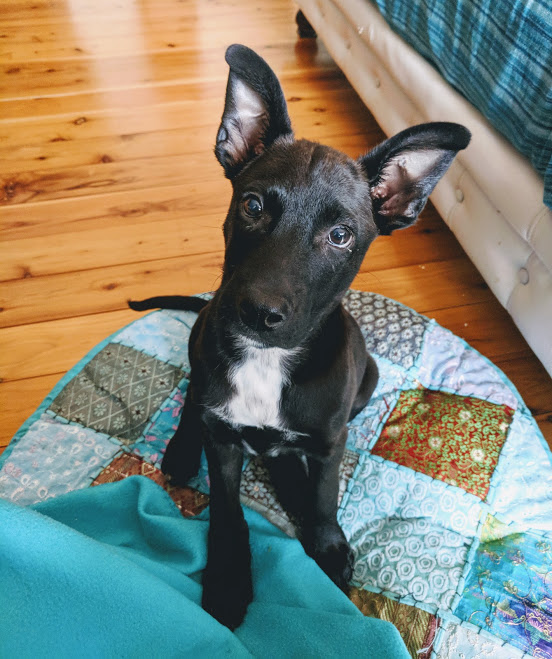
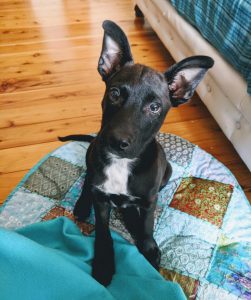 We walk out of the RSPCA shelter clutching our tiny bundle of paws and ears. Sebastian, as he has been known in the shelter, is naturally nervous and has tried to hide under my chin, around my neck and under my hair. I can feel his tiny heart beating a hundred to the dozen against my skin so I talk calmly and pat him until he settles.
We walk out of the RSPCA shelter clutching our tiny bundle of paws and ears. Sebastian, as he has been known in the shelter, is naturally nervous and has tried to hide under my chin, around my neck and under my hair. I can feel his tiny heart beating a hundred to the dozen against my skin so I talk calmly and pat him until he settles.